When it comes to navigating the often delicate process of terminating a temporary worker, having a clear and concise letter template can make all the difference. Crafting a respectful and professional termination letter not only communicates your decision effectively but also helps maintain a positive relationship for the future. In this article, we will explore essential elements to include in your letter and provide practical tips to ensure your message is delivered appropriately. So, if you're ready to learn how to write an effective termination letter, keep reading!

Introduction and Purpose
Temporary employment contracts, often utilized in various industries such as retail or event management, can sometimes be terminated due to several factors including project completion or budget constraints. The purpose of this communication is to formally inform the temporary worker of their termination. This decision is driven by specific organizational needs that necessitate the conclusion of their role, ensuring clarity and transparency in the process. This action, while difficult, aims to maintain operational efficiency and adhere to pre-established employment terms.
Specific Termination Date
Termination of temporary workers must be handled with care and precision to ensure compliance with labor laws and respect for the individual. A notice detailing the specific termination date, such as December 15, 2023, is essential. The communication should specify the nature of the temporary position, clarifying the duration of the employment contract initially agreed upon, typically spanning a predetermined period like three months or six months. Additionally, providing the reason for termination, whether due to project completion, budget constraints, or performance-related issues, is vital for transparency. Including information about the final paycheck calculation, any earned benefits, or return of company property ensures a smooth and professional closure to the worker's tenure.
Reason for Termination
The termination of temporary workers may occur due to various reasons, including performance issues, project completion, or changes in staffing needs. Performance issues can arise from unmet productivity targets or repeated policy violations, potentially documented through evaluations. Project completion may lead to the conclusion of contracts, especially in industries like construction, IT, or event planning where specific milestones dictate employment duration. Changes in staffing needs can stem from economic shifts or strategic restructuring within a company, potentially influenced by market trends or financial forecasting. Proper documentation and communication of these reasons are essential to ensure a clear understanding for the temporarily employed individual and maintain professional relationships.
Return of Company Property
At the conclusion of a temporary worker's assignment, the return of company property, such as identification badges, laptops (often valued over $1,000), mobile devices, and any proprietary documents, is paramount. The retrieval process may include collecting tools and equipment specific to the role, including uniforms for client-facing positions. Ensuring the integrity of company assets is crucial to maintain operational efficiency at the company's headquarters (specific address) and avoid potential charges for unreturned items. A comprehensive checklist documenting all returned items aids in confirming their condition and assists in asset management for future reference. Proper procedures establish accountability and demonstrate respect for company resources.
Final Payment and Benefits Information
Temporary workers receive a final payment that includes all accrued wages until the last day of employment, typically outlined in the contract. Benefits such as health insurance and retirement contributions cease immediately upon termination unless specified otherwise. The final paycheck may include compensation for unused vacation days based on company policy, which varies significantly across industries. An itemized statement detailing deductions, such as taxes and other contributions, is provided alongside the final payout. It is crucial for workers to confirm their exit from employment with human resources to ensure compliance with applicable labor laws. Additionally, instructions for continuing benefits or accessing retirement funds may be included in the communication to provide clarity upon leaving the organization.

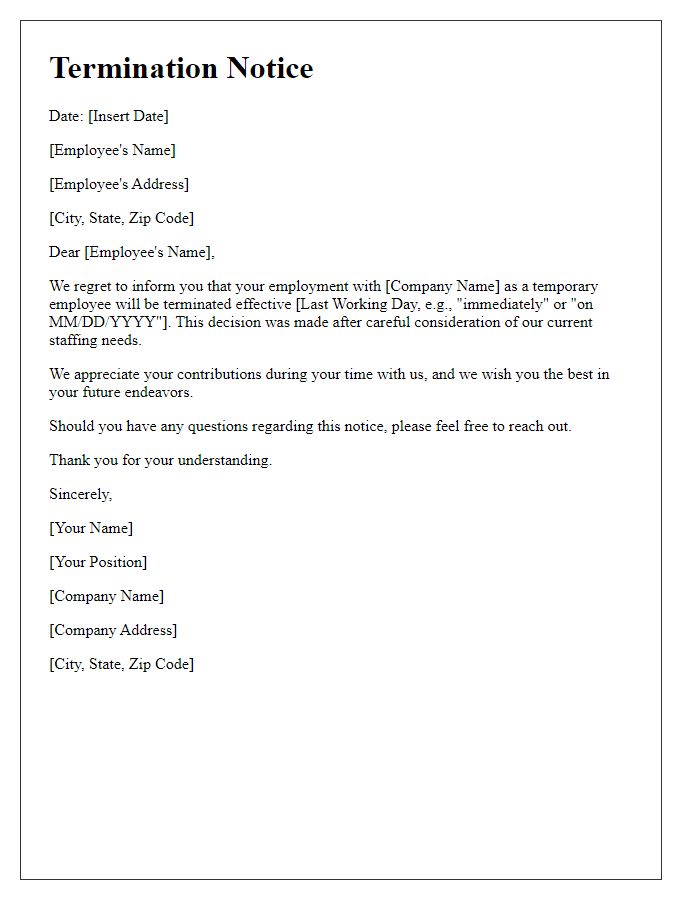
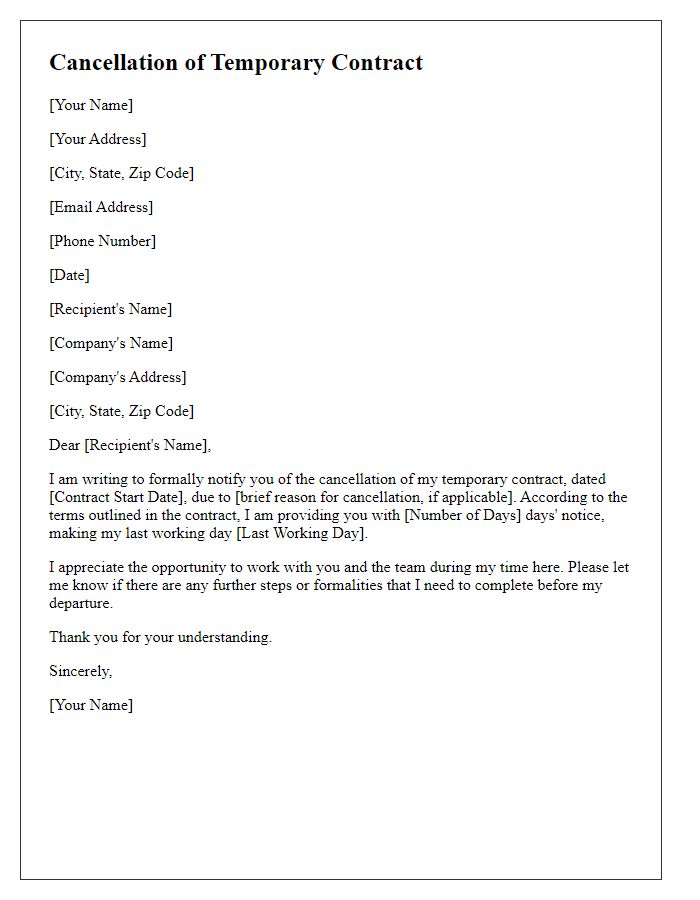
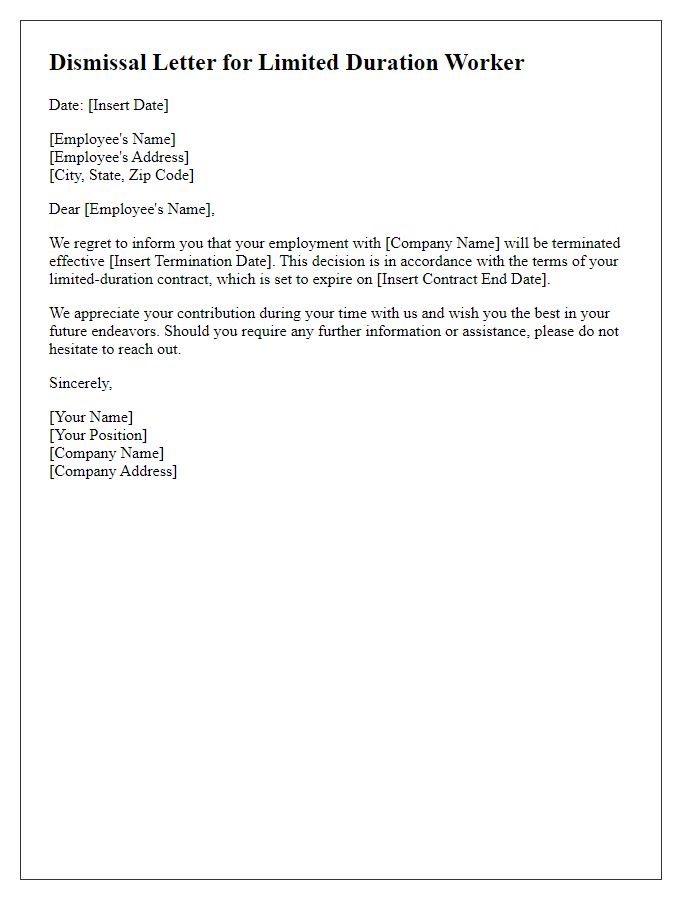
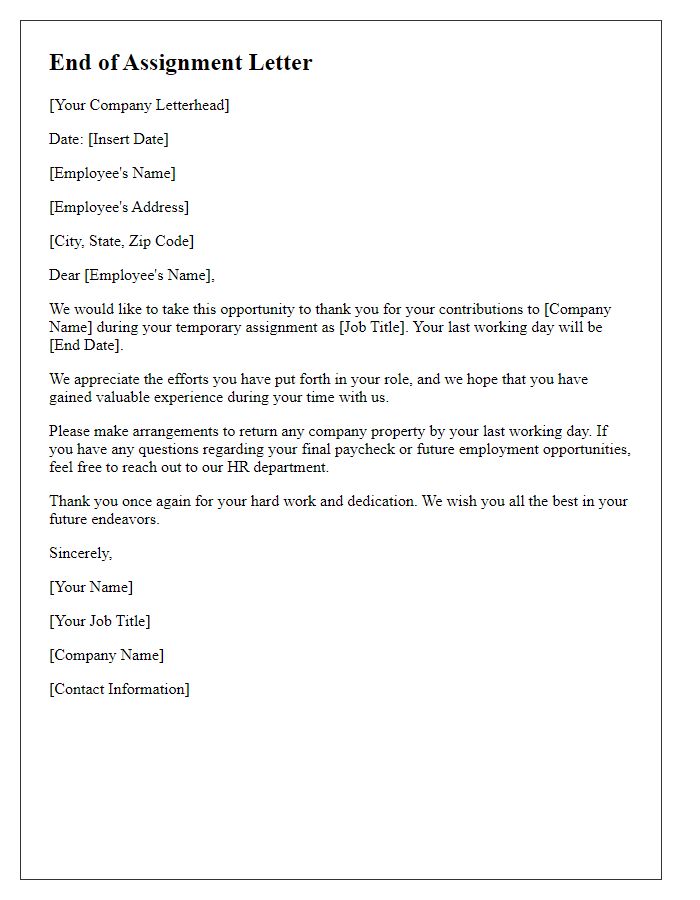
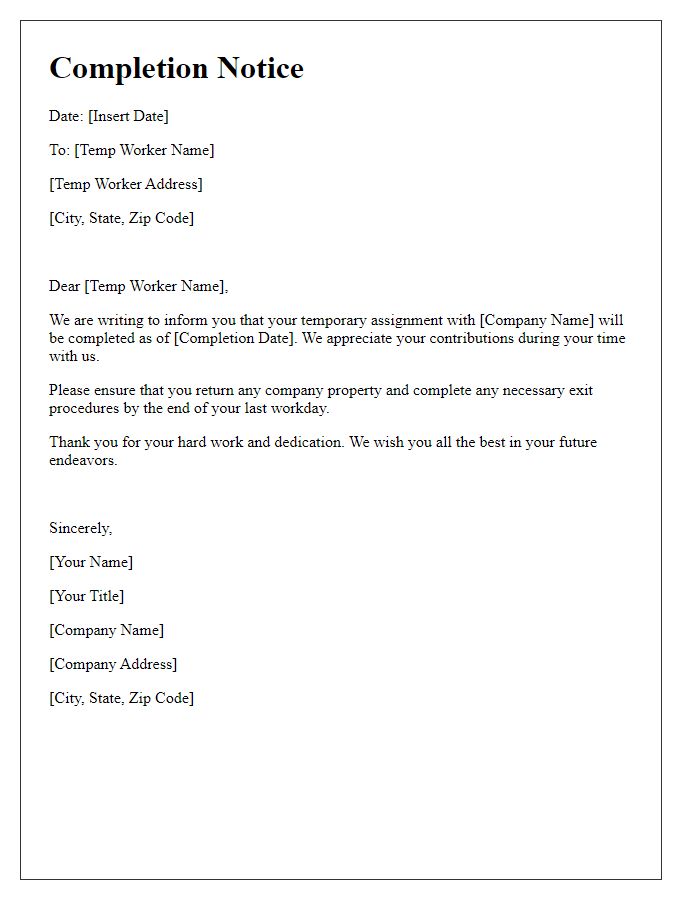
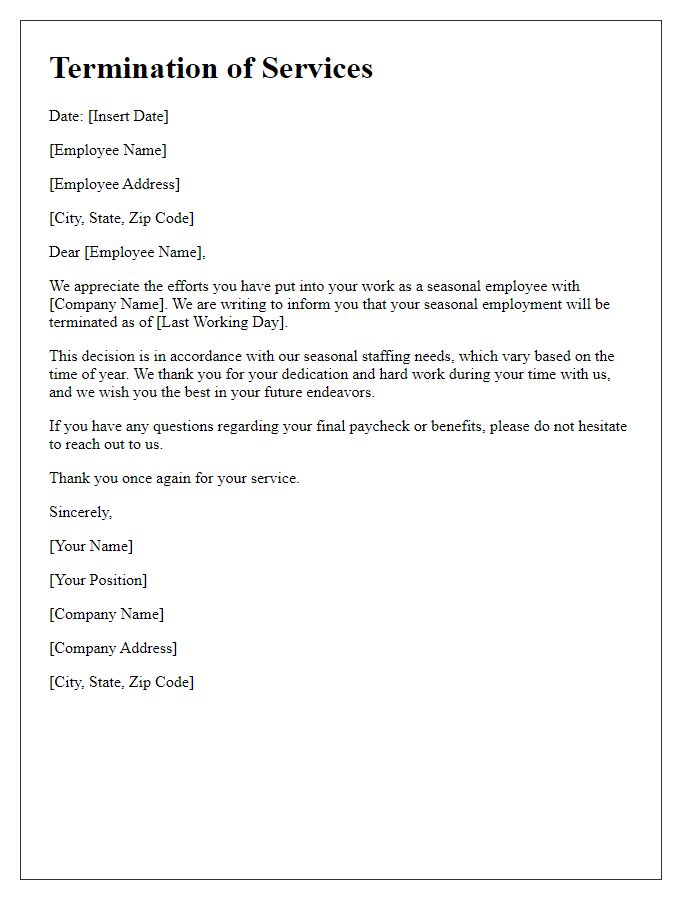
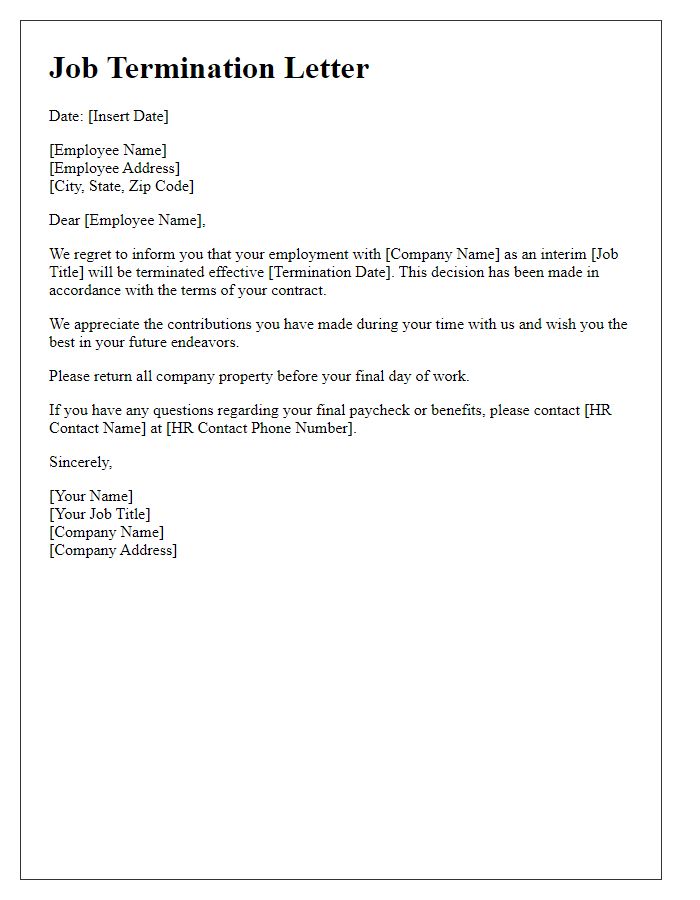
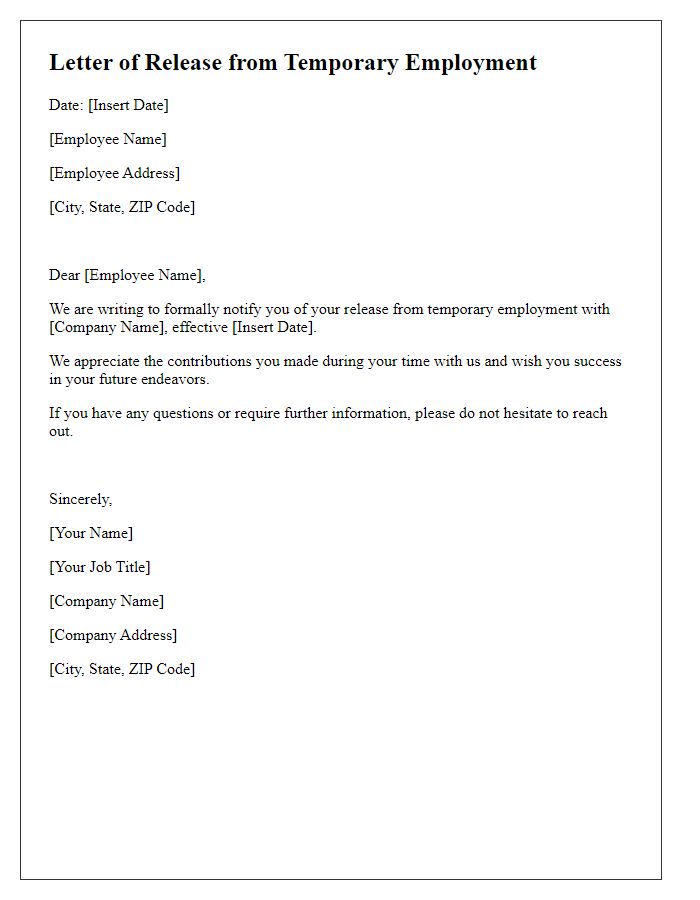
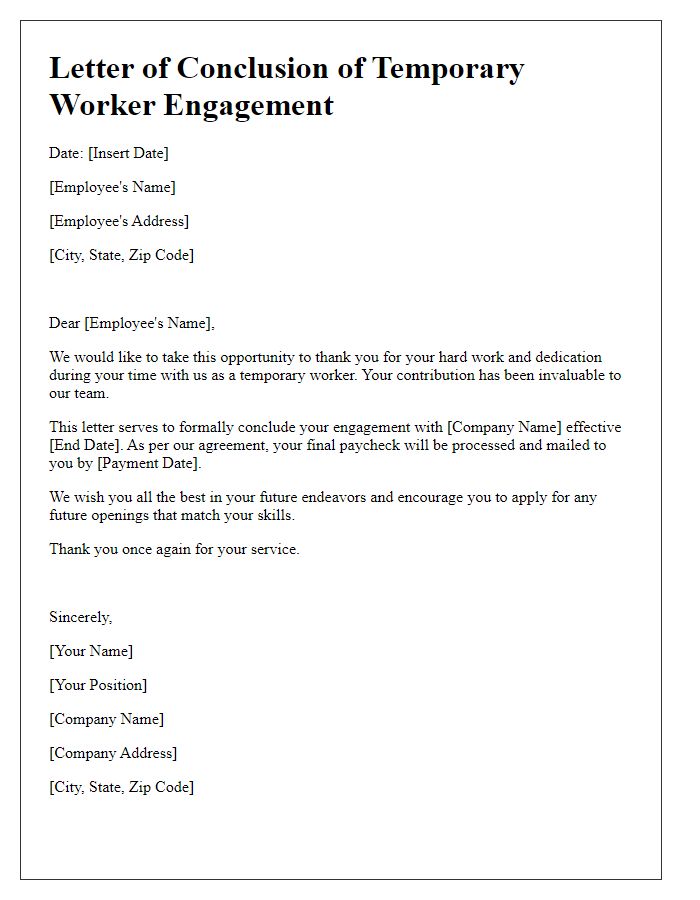
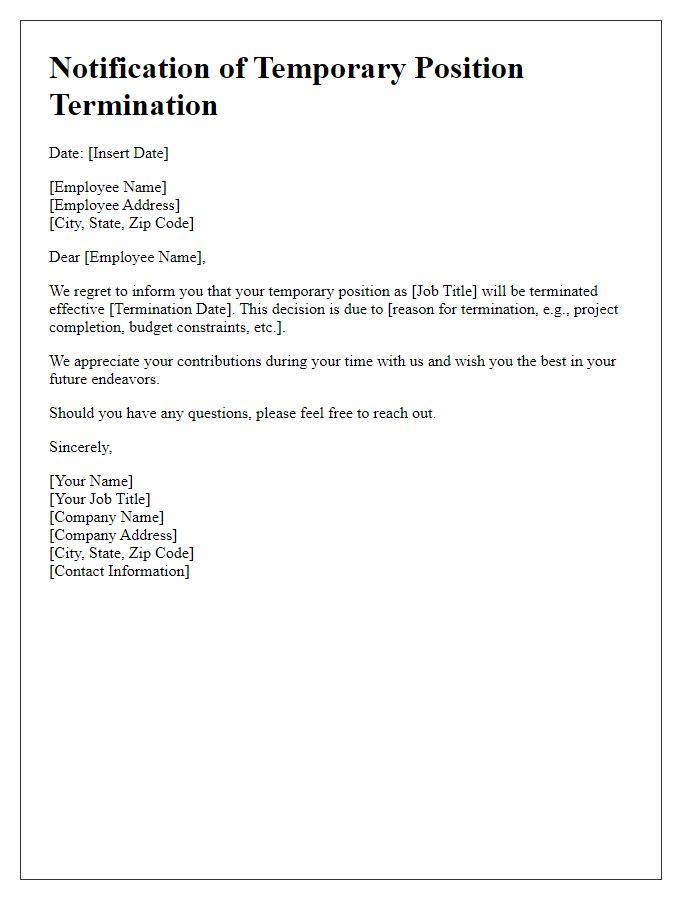


Comments